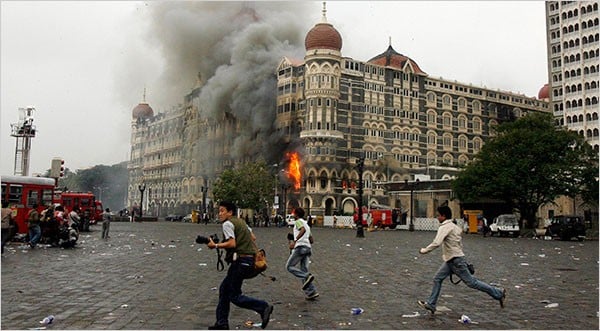

Dear all,
Five years ago the world watched in horror as armed men attacked Mumbai’s Taj Hotel and turned the place into a war zone. For three days, live TV images of the siege of the Taj and the attack on Mumbai dominated the news and kept viewers transfixed and horrified.
The whole drama played out like a chilling action thriller or a modern day video war game. And now the story of that attack has been put together in a remarkable book by the investigative team of Adrian Levy and Cathy Scott-Clark. ‘The Siege:Three Days of Terror Inside the Taj’ chronicles not just the attack as it happened but also what can be pieced together about its planning and aftermath.
The Siege is a gripping account of the Mumbai attacks. The authors have put together a wealth of information and have managed to organise it into a gripping, almost cinematic, story of not just violence, indoctrination, espionage and terrorism but also of love, duty and bravery.
The Taj "India’s glittering gateway to the World" is the central stage here; the book begins with a list of the Dramatis Personae, a cast consisting of hotel guests/diners, hotel staff, security personnel and terrorists. And this narrative structure works really well as the story of the attacks unfolds.
A number of interesting facts emerge: Mumbai police had various intelligence reports of a potential attack on the city’s luxury hotels and they had already been pressurising the Taj to put a number of security measures in place but these targets were not met: the relevant police officer went on leave, the hotel became lax about putting the measures in place. Then, as chillingly discovered when gunmen had already entered and attacked the hotel, the police picket at the entrance had been removed just a few days earlier, after unsuccessful requests that the hotel feed the policemen while on duty.
Similarly, from what has been pieced together of the planning of the attack, it emerges the attack was actually scheduled for the end of September but delayed after two unsuccessful starts.
The planning of the attacks and the story of the young men who carried it out is fascinating. Looking at the photos of the attackers, one almost feels sorry for these killers: they appear so young and slight. The Mumbai police eventually managed to monitor the terrorists’ communication with their handler (identified by the authors as Wasim aka Sajid Mir of LeT) while they were inside the hotel; those ensuing call logs are extremely interesting.
The story of David Headley, aka Daood Saleem Gilani in the chapter ‘Prince David’, also makes great reading. The son of a former DG of Radio Pakistan and his American wife, Headley was the man with one blue eye and one brown, a shady character recruited by the Americans after several drug smuggling offences, who did all the reconnaissance for the Mumbai attacks, worked for Lashkar yet continued to be trusted and ‘run’ by US intelligence agencies. A reportedly charming man -- who had no qualms about betraying his friends or endangering his family or his multiple wives.
The authors are also critical of certain aspects of the Mumbai police’s response to the attacks. But it becomes clear from the account that this was largely due to a pattern of bureaucratic systems combined with timid leadership that can be so typical in the subcontinent.
In an age where journalists have mostly become passive recipients of planted stories and willing participants in the process of spinning news and skewing the narrative, Scott-Clark and Levy’s investigative work is heartening. The Siege is a great story, a well written documentation of a deadly attack and a great insight into a murky world of espionage and international terror.
Worth reading.
Best wishes,
Umber Khairi